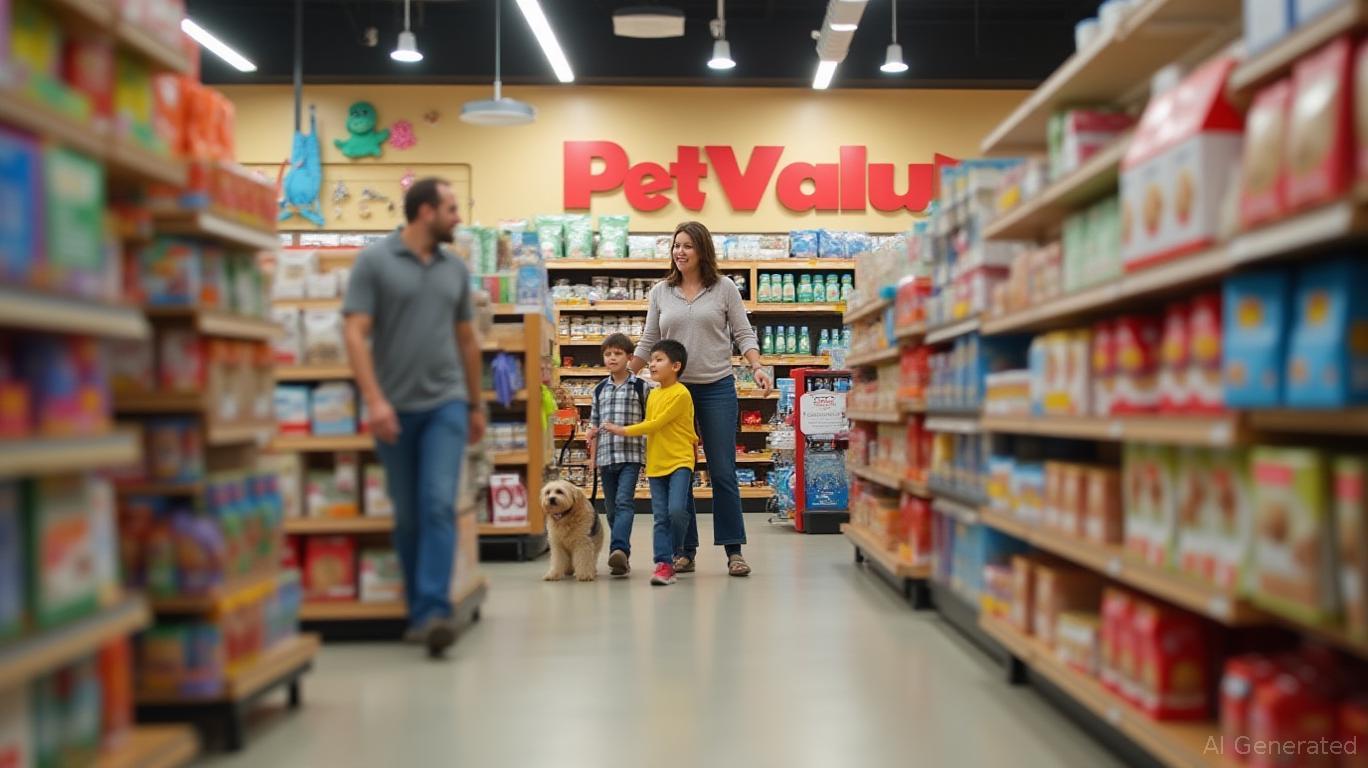Pet Valu's Strategic Transition Post-Roark Exit: Unlocking Catalyst-Driven Valuation Upside
The completion of Pet Valu's secondary offerings in June 2025 marks a pivotal inflection point for the Canadian pet retailer. With the exit of Roark Capital—a major shareholder since 2017—the company has shed legacy governance ties, gained boardroom independence, and positioned itself to accelerate growth through its omni-channel strategy and supply chain modernization. These developments, coupled with reduced leverage risks and potential capital return opportunities, create a compelling catalyst-driven revaluation narrative for investors.
Governance Overhaul: A Clean Slate for Decision-Making
The June 9 closure of Pet Valu's $576 million secondary offering effectively ended Roark Capital's 14-year involvement. Key to this transition is the termination of the Investor Rights Agreement, which had granted Roark governance privileges, including director nominations. Clayton Harmon, Roark's appointee, will exit the board, while remaining directors like Patrick Hillegass and Kevin Hofmann will focus on strategic priorities unburdened by external influence.
This governance reset reduces agency risks and opens the door for Pet Valu to pursue a unified vision. With no major shareholder constraints, management can prioritize initiatives such as expanding e-commerce integration, optimizing store layouts, and scaling its supply chain. As CEO Richard Maltsbarger noted in the June 3 press release, this marks the “end of an era” and the dawn of a new, independent chapter for the company.

Strategic Shifts: Omni-Channel Growth and Supply Chain Efficiency
Pet Valu's 800+ store network and omni-channel infrastructure are central to its growth thesis. In 2024, the company reported $1.08–$1.11 billion in revenue and $243–$248 million in Adjusted EBITDA, reflecting strong execution despite macroeconomic headwinds. The omni-channel model—combining in-store convenience with online ordering and curbside pickup—has been a key driver, especially in urban markets.
The modernized supply chain, now 50% complete, promises further margin expansion. Capital expenditures for 2024 totaled $50 million, with half allocated to supply chain upgrades. Once fully implemented, these systems could reduce logistics costs and improve inventory turnover, directly boosting profitability.
Valuation Catalysts: Governance, Capital Returns, and Margin Leverage
The Roark exit removes a critical overhang, enabling Pet Valu to focus on value creation without governance distractions. Three catalysts are poised to drive revaluation:
- Reduced Leverage Risks: While the secondary offerings did not directly reduce debt (proceeds went to selling shareholders), the removal of Roark's governance constraints allows management to optimize capital structure. Lower perceived governance risk could narrow credit spreads and improve access to financing.
- Capital Return Potential: With a streamlined ownership structure, Pet Valu may now consider buybacks or dividends. Its strong free cash flow (estimated at ~$150–$200 million annually) provides ample flexibility for shareholder-friendly measures.
- Margin Expansion: Supply chain efficiencies and omni-channel scale could lift EBITDA margins beyond the 2024 guidance of 22.5%–23%.
Investment Thesis: Near-Term Buying Opportunity
Pet Valu's shares have lagged sector peers amid investor uncertainty over governance and Roark's influence. However, the June 9 offering closure removes this overhang, creating a buy signal at current valuations. At a trailing P/E of ~15x 2024 estimates, the stock trades at a discount to peers like Chewy (NYSE:CHWY) and Canadian Tire.
Investors should target entry points below C$30, with a 12–18 month price target of C$38–C$42, assuming margin improvements and capital returns. Risks include supply chain execution delays or a slowdown in pet retail demand, but Pet Valu's market leadership and strategic clarity mitigate these concerns.
Conclusion: A Re-Rating Catalyst in Motion
Pet Valu's transition from a Roark-backed entity to an independent operator is a textbook example of governance-driven revaluation. With boardroom independence secured, a scalable omni-channel model, and margin-accretive supply chain investments, the company is primed to deliver outsized returns. For investors seeking exposure to a resilient consumer staple with structural growth tailwinds, Pet Valu now offers a compelling entry point.
Recommendation: Buy Pet Valu (TSE:PV) at current levels, targeting a 12–18 month upside of 25–30%.

Comments
No comments yet